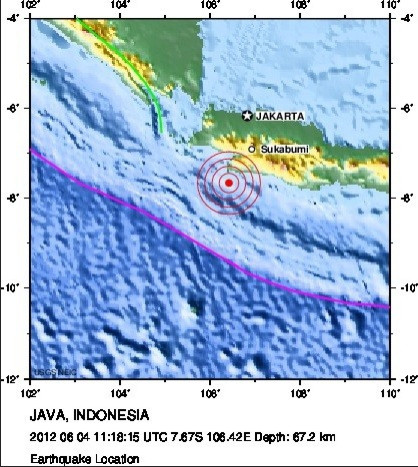Map Of The World's Earthquakes Plots Every Temblor Since 1898

A map of the world's earthquakes that plots every temblor with a magnitude of 4.0 or greater since 1898 is surprising scientists for a number of reasons.
First, I was surprised by the sheer [number] of earthquakes that have been recorded, the map's maker, John Nelson, of data visualization company IDV Solutions, told OurAmazingPlanet.com. It's almost like you could walk from Seattle to Wellington [New Zealand] if these things were floating in the ocean, and I wouldn't have expected that.
The map of the world's earthquakes can be viewed here. There are 203,186 earthquakes marked on the map, with the intensity of each quake signified by the brightness of the dot on the map. The map shows earthquakes from 1898 through 2003, although the photo does not record every 4.0 or greater quake in history due to the technology limitations that existed in the earlier years of earthquake detection.
The brightest spots on the map of the world's earthquakes can be seen along the Pacific Ring of Fire, which runs along New Zealand, the Philippines, Indonesia and Japan and continues along the western coast of the United States and Mexico before moving along the western coast of South America.
There are so many earthquakes around the Pacific Ring of Fire because the area has many subduction zones, or places where tectonic plates overlap, according to Our Amazing Planet.
Nelson told the website he didn't expect there to be so many abduction zones in the area, although he knew the Pacific Ring of Fire was a hotbed of earthquake activity.
I have a general sense of where it is, and a notion of plate tectonics, but when I first pulled the data in and started painting it in geographically, it was magnificent, he told Our Amazing Planet. I was awestruck at how rigid those bands of earthquake activity really are.
Nelson said the map comes on the heels of a similar illustration depicting 50 years of tornadoes in the United States.
Nelson said the map of the world's earthquakes was designed in the hopes that more people will become fascinated by temblors and learn why they occur.
To get them to start asking questions, he said.
Nelson used data from the U.S. Geological Survey, NASA and academic and other institutions in California. He said the map is gives people a better grasp of seismological information.
It seems almost superficial, but it's true, he said. If something is treated with thoughtful design, then it becomes better.
© Copyright IBTimes 2025. All rights reserved.






















